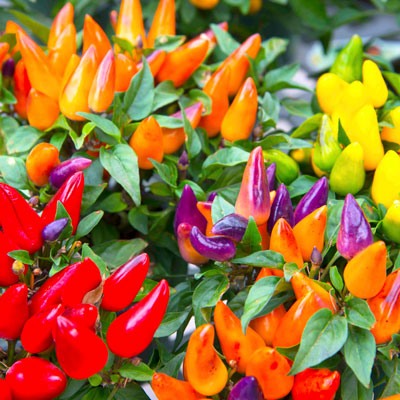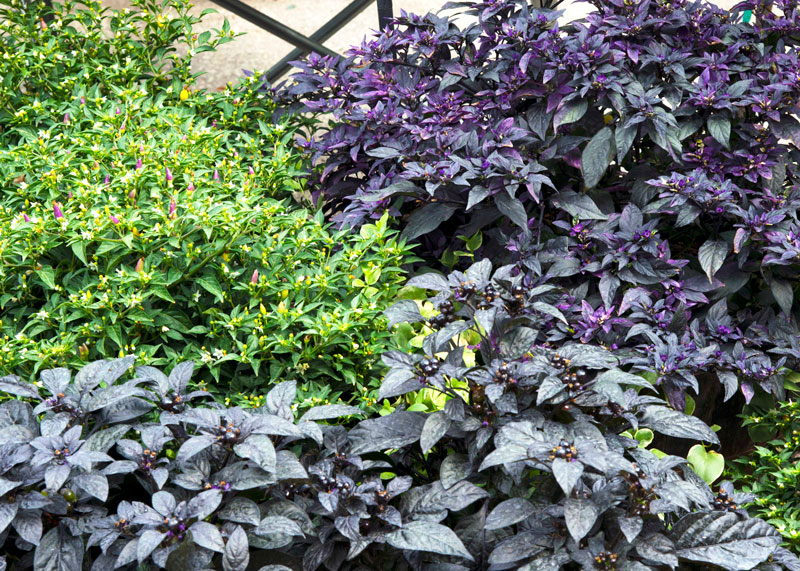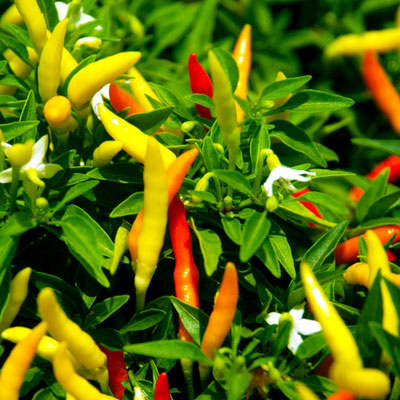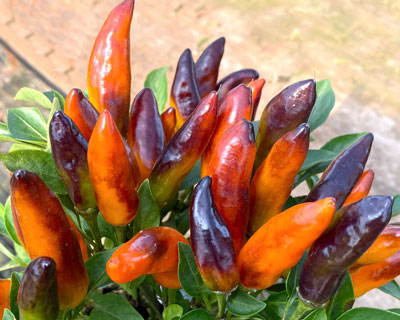Peppers add punch to your plantings
Fall flowers are nice, but they aren’t any showier than the dazzle of ornamental peppers in full fruit for the next three months. They’ve become mainstay sales crops – nurseries have great supplies.

Here’s what you’ll want to know…
Here are the few critical facts you’ll want to keep in mind.
• Most ornamental pepper plants grow to be the size of a basketball. Occasionally they’ll be slightly larger.
• Their fruit will usually be 3/4-inch to 1-inch in size, but there will be larger types and there are certainly smaller types, some not any bigger than BBs.
• Fruit colors include red, orange, yellow and purple, sometimes all on the same plant at the same time.

• Most will have dark green foliage, but many newer varieties have deep purple leaves. Some are even variegated.
• Grow peppers in full or nearly full sun.
• Plant them into well-prepared garden soil or a lightweight, highly organic potting soil.

• They’re especially attractive used in large patio pots where they can be combined with similarly sized flowering annuals for nice contrasts in colors and textures.
• Keep the plants moist at all times, but be sure that they drain well. They are not tolerant of waterlogged ground.

• Feed them weekly with a diluted, water-soluble houseplant food that has a high nitrogen content.
• Yes, these peppers are usually hot. Some very hot. Most varieties have not been bred and selected for their edibility, but primarily for their good looks. If you do decide to taste-sample them, do so at your own risk.
What the growers are reading…
In seeing what I could find about ornamental peppers online, I came across this recent story from Greenhouse Management. It’s what commercial growers might be reading as they decide which crops to grow next year. Click to see it.
